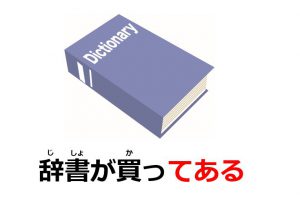Last time, you learned how to express experiences like “前に日本語を勉強したことがある (I have studied Japanese before)” and “前に日本語を勉強している (I studied Japanese before).” Now, you can express things in the future, the present, and the past. In this lesson, we would like to focus on what aspects verbs may have.
Explanation for How Japanese Aspect Works
| Table of Contents …始める and …だす: the Beginning of Actions or Events …終わる and …やむ: the End of Actions or Events …続ける and …つつある: the Middle of Actions or Events …ところだ: Expressing “Just” |
Aspects may be divided into three groups: the beginning, the middle, and the end of actions or events. Taking the verb: “to eat” as an example, this may be expressed as the three groups in English like this: you have started eating, are in the middle of eating, and have finished eating. Let’s learn how to express them in Japanese.
…始める and …だす: the Beginning of Actions or Events
When you express the beginning of actions or events, you connect verbs with 始める or だす. The conjugation is simple. You can utilize the polite form and attach 始める or だす instead of ます.
| 見る | 見ます | 見始める / 見だす |
| する | します | し始める / しだす |
| 来る | 来ます | 来始める / 来だす |
| 買う | 買います | 買い始める / 買いだす |
| 読む | 読みます | 読み始める / 読みだす |
This conjugation pattern is often used for other forms, too. To do this more fluently, please make sure to master how to conjugate verbs into the polite form. Now, let’s move to the functions
| [私は / が] | ごはんを | 食べ(始めた / 始めました) |
| [Topic / Subject] | Direct Object | Verb |
| [I] (have) started eating a meal. | ||
This can be translated as “start verb-ing” in English. With the example above, we have used the ta-form at the end. As you have already learned, you need to judge whether it is in past tense or present perfect tense since we use the same form in both cases. Of course, you can use this expression for present and future tense, too.
| 5時から飲み(始める / 始めます)よ。 [We] will start drinking at 5:00pm. |
| 毎日6時にご飯を作り始めて(いる / います)。 [I] start cooking a meal at 6:00pm everyday. |
| さっき小説を読み(始めた / 始めました)。 [I] have just started reading the novel. |
| 昨日、雨が急に降り(始めた / 始めました)。 [It] suddenly started raining yesterday. |
You can also use 始める as a verb.
| 試合を(始める / 始めます)。 [We] will start the game. |
| 練習を(始めた / 始めました)。 [We] started practice. |
| 雨が | 急に | 降り(だした / だしました) |
| Subject | Adverb | Verb |
| It suddenly started raining. | ||
…だす have the almost same meaning as …始める, but there are two differences. The first is that …だす implies unexpected actions or events. Therefore, it’s often unnatural to use …だす when you set yourself as a subject and use volitional verbs such as 作る and 食べる because your own actions can generally not be unexpected ones.
=> Unnatural! |
| 子供が泣き(だした / だしました)。 The child has started crying. |
The second difference is that …だす itself cannot be a verb. Thus, the following examples are wrong.
=> Wrong! |
=> Wrong! |
[adsense]
…終わる and …やむ: the End of Actions or Events
The conjugation is the same as the above. Instead of ます, you attach 終わる and やむ to the stem of verbs.
| [私は / が] | ごはんを | 食べ(終わった / 終わりました) |
| [Topic / Subject] | Direct Object | Verb |
| [I] (have) finished eating a meal. | ||
Just like …始める, this can be translated as “finish -ing” in English. You can substitute …終える for …終わる, but this is more formal and only used with volitional verbs.
| いつもすぐマンガを読み(終わる / 終わります)。 [I] always finish reading manga quickly. |
| 7時までにごはんを作り(終わる / 終わります)。 [I] will finish making a meal by 7:00 pm. |
| 歌を歌い(終わった / 終わりました)。 [I] finished singing a song. |
| 歌を歌い(終えた / 終えました)。 (Formal) [I] finished singing a song. |
When actions don’t have a particular end, e.g. momentary actions like “買う to buy”, …終わる doesn’t work well. The verbs used in this form should be ones which take some time to complete.
| 携帯電話を(買った / 買いました)。 [I] bought a mobile phone. |
=> Unnatural! |
Be careful; unlike 始まる, 終わる itself can be both an intransitive and a transitive verb.
| 会議を(終わる / 終わります)。 [We] will finish the meeting. |
| 夏が(終わる / 終わります)。 Summer will finish. |
| 子供が | やっと | 泣き(やんだ / やみました) |
| Subject | Adverb | Verb |
| The child has stopped crying at last. | ||
…やむ also expresses the end of actions or events. However, …やむ cannot be used with volitional verbs even if subjects are third people. You can say “男が突然歌いだした (A man has suddenly started singing),” but cannot say “男が突然歌いやんだ.” Thus, the usage is limited in comparison with the previous grammar.
| 田中さんの子供はすぐに泣き(やむ / やみます)。 Tanaka-san’s child stops crying quickly. |
| 目覚ましが鳴り(やまない / やみません)。 The alarm won’t stop ringing. |
やむ can be a verb and means “finish,” “stop,” “to be over.” This is generally used for only weather.
| 雨が(やむ / やみます)。 It will stop raining. |
| 風が(やんだ / やみました)。 The wind calmed down. |
…続ける and …つつある: the Middle of Actions or Events
You already know one of the expressions for the middle of actions or events, which is present progressive tense: 日本語を勉強している. However, there are some cases which require you to use different expressions: …続ける and …つつある. The conjugation is the same as the above. You can utilize the one for the polite form.
| [私は / が] | 一日中 | 映画の話を | し(続けた / 続けました) |
| [Topic / Subject] | Adverbial Noun | Direct Object | Verb |
| [I] continued talking about movies all day. | |||
The basic function of …続ける is to express continuous actions or events. Just like other verbs, the plain form indicates future tense. Therefore, if you would like to express continuous actions at present, you have to apply the te-form + いる for it.
| 10年歌を歌い続けて(いる / います)。 [I’ve] been continuing singing songs for ten years. |
| 死ぬまで日本語を勉強し(続ける / 続けます)。 [I] will continue to study Japanese until [I] have died. |
Regarding the difference between present progressive tense and …続ける, the former one indicates continuous action at some points while the later one indicates that actions doesn’t finish within a period of time. Therefore, with the examples below, …続ける is not suitable because you are talking about the action at particular time.
=> Wrong! |
| 昨日の夜7時にご飯を食べて(いた / いました)。 At 7:00pm yesterday, [I] was eating a meal. |
In the following case, している sounds something like you are studying Japanese without a rest until you have died. Thus, when you mention a certain period of time, …続ける is more suitable.
| 死ぬまで日本語を勉強し(続ける / 続けます)。 => Natural! |
=> Unnatural! |
Note: when you use 雨が降る with …続ける, you need to change the form to …続く. This is an exception.
| 雨が降り(続く / 続きます)。 It continues raining. |
| 氷が | 溶けつつ(ある / あります) |
| Subject | Verb |
| The ice is in the middle of melting. | |
…つつある is kind of a new concept that you haven’t learned yet. The plain form: 溶ける indicates a momentary action and will result in the ongoing state: 溶けている. Then, there should be a time of transformation from 溶ける to 溶けている. This is the place where …つつある comes into play. Note: this sounds a little formal.
| アフリカは発展しつつ(ある / あります)。 Africa is in the middle of developing. |
| 夢が現実になりつつ(ある / あります)。 The dream is about to come true. |
…ところだ: Expressing “Just”
This is a very powerful word. By utilizing this, you can express every aspect: the beginning, the middle, and the end of actions or events with a few exceptions. And, there is no conjugation. You can directly connect verbs with …ところだ.
The Plain form + ところだ
| [私は / が] | ごはんを | 作るところ(だ / です) |
| [Topic / Subject] | Direct Object | Verb + ところだ |
| [I] am about to start making a meal. | ||
When you connect the plain (dictionary) form with …ところ(だ / です), you can express a moment just before actions are taken. If you apply the ta-form for it, you can also express actions which you have not started like “I was about to do it.” Here are examples.
| 今から家に帰るところ(だ / です)。 [I] am about to go home now. |
| ちょうど寝るところ(だ / です)。 [I] am about to go to bed. |
| 出かけるところ(だった / でした)。 [I] was about to leave. |
| ちょうど電話をするところ(だった / でした)。 [I] was just about to call [you]. |
The Ta-form + ところだ
| [私は / が] | ごはんを | 作ったところ(だ / です) |
| [Topic / Subject] | Direct Object | Verb + ところだ |
| [I] have just made a meal. | ||
When you connect the ta-form with …ところ(だ / です), you can express a moment just after actions are taken. This is very useful to express present perfect tense. When you apply the ta-form for it, you can also express the moment at some points in the past.
| 宿題がちょうど終わったところ(だ / です)。 The homework has just finished. |
| 電車がちょうど出発したところ(だ / です)。 The train has just left. |
| 雨がやんだところ(だった / でした)。 [It] had just finished raining. |
| 日本に着いたところ(だった / でした)。 [I] had just arrived at Japan. |
Only in this context, you can reword this by using the word: ばかり. This word also has some functions which you will learn in other lessons.
| 日本に着いたばかり(だった / でした)。 [I] had just arrived at Japan. |
| 日本に着いたところ(だった / でした)。 [I] had just arrived at Japan. |
The Te-form + いる + ところだ
| [私は / が] | ごはんを | 作っているところ(だ / です) |
| [Topic / Subject] | Direct Object | Verb + ところだ |
| [I] am just making a meal. | ||
When you connect the te-form + いる with …ところ(だ / です), you can express a moment that you are just taking actions or events are happening. By using this, you can reword other expressions for continuous actions or evens. Since …つつある is a formal word, ているところ is more suitable in conversation.
| 今、本を読んで(いる / います)。 [I’m] reading a book. |
| 今、本を読んでいるところ(だ / です)。 [I’m] just reading a book. |
| 氷が溶けつつ(ある / あります)。 The ice is in the middle of melting. |
| 氷が溶けているところ(だ / です)。 The ice is in the middle of melting. |
Be careful; you cannot substitute ているところ for the following cases.
1. When Verbs Are Non-volitional
| 雨が降って(いる / います)。 It is raining. |
=> Wrong! |
2. When Conceptual Things Are Changing
| 夢が現実になりつつ(ある / あります)。 The dream is about to come true. |
=> Wrong! |
3. When …続ける Is Used
| 死ぬまで日本語を勉強し(続ける / 続けます)。 [I] will continue to study Japanese until [I] have died. |
=> Wrong! |
Summary
- The polite form can be a base for other conjugations.
- …始める and …だす express the beginning of actions or events.
- …終わる and …やむ express the end of actions or events.
- …続ける and …つつある express the middle of actions or events.
- …ところだ expresses “just”at the given moment.
The difference between the two words is clear when you express the beginning and the end of action or events. The expression of the middle of actions or events are a little complicated in comparison. In order to grasp the concept, you need to understand how progressive actions and resultant states work. If you have difficulty, please review the previous lessons. Next, you will tackle the last lesson in the tense and aspect section: the other utilization of the te-form.

How to Express Experience in Japanese ことがある and ている

Utilization of the Te-form: てしまう, てある, ておく, and てみる



